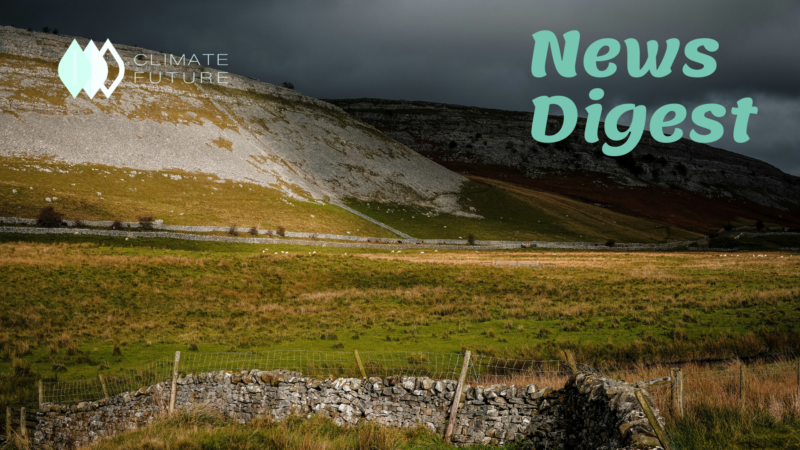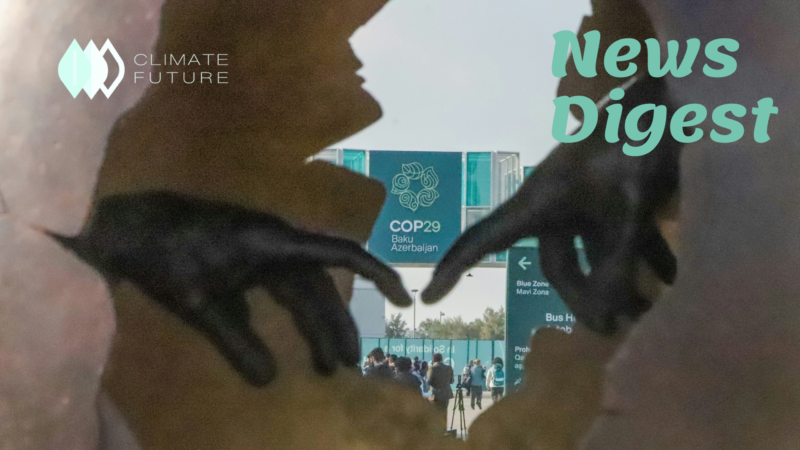UN report finds nature conservation funding must triple globally this decade
According to a joint report in the G20 countries on finance for nature, the World Economic Forum (WEF), the UN Environment Program (UNEP) and the Economics of Land Degradation Initiative overlook how rich countries handle better nature-based solutions. The report findings describe that private sector investments remained small with $14 billion or 11% annually although they presented 60% of the total national GDP in most G20 nations. Leading industrialized G20 nations have to encounter their role as influential leaders to fight against climate change by associating economic recovery with development nature and climate goals. In order to develop sustainable farming and initiatives or supply chains such as producing green spaces in cities to solve temperature rises, G20 countries must handle interrelated climate, land degradation and biodiversity issues by upgrading their yearly investments in nature to $285 billion by 2050. Furthermore, $105 billion, 87% of those investments were separated towards domestic programs internally. According to the findings, net-zero and nature-positive investments have to be increased as soon as possible to close the finance gaps. State of Finance for Nature asked G20 nations to raise investment in non-G20 countries to be more cost-effective and efficient than appealing in internal nature-based solutions.
Madagascar: Deadly tropical storms cause flooding, landslides
According to the report from the UN Office for the Coordination of Humanitarian Affairs (OCHA, the two tropical weather conditions in Madagascar have caused at least 34 dead and triggered landslides and flooding, especially in the capital, Antananarivo. Initially the rains were driven by an Intertropical Convergence Zone, near the equator, around 17 January and rose when a cyclone made landfall in the eastern part of the country three days later. Over the weekend, 24 lives were lost since the traditional houses collapsed in the capital and others were destroyed by landslides. The authorities announced that more than 62,000 people have been suffering in seven regions with over 58,000 in the Analamanga Region and its neighboring metropolitan area. At that time, more than 6,800 houses were under water and many others had the risk of collapsing or flooding. According to the National Office for Risk and Disaster Management, more than 35,260 people have been pressured to move to 62 displacement sites organized by the authorities.
Bringing dry land in the Sahel back to life
While trying to grow crops in the Sahel region, they often faced erratic rainfall, poor soil and long periods of drought. However, the Delfino plough, the introduction of a state-of-the art heavy digger is proving to be a breakthrough. As part of the Action Against Desertification (AAD) program, the FAO has introduced the Delfino to four countries in the Sahel Region: Niger, Nigeria, Burkina and Senegal to cut out the impacted bone-dry soil to more than half a meter depth. It is obviously efficient as 100 farmers digging irrigation ditches by hand can finish over a hectare a day. In Niger and Burkina Faso, the targeted amount for immediate restoration has already been achieved and extended with the help of Delfino plough. In Senegal and Nigeria, it works to upgrade the restoration of degraded land. Since the plough obviously increases the ploughing process and decreases the physical labor needed, it provides women extra time to manage other tasks. It also intends to increase women’s participation in local land restoration on a large scale by providing them leadership roles via the village committee which manages the work of restoring land. Under the AAD program, each selected site for restoration is supported to set up a village committee to overlook the resources and take ownership right from the start.
Rare coral reef discovered near Tahiti is ‘like a work of art’, says diver
A UN-supported scientific mission off the coast of Tahiti discovered one of the largest coral reefs in the world. UNESCO mentioned that divers had explored at depths of between 30 and 65 meters and found a large rose-shaped coral spanning. According to the early indications, its depth has covered it from bleaching which resulted from global warming. The reef discovered is highly usual due to its deep location, as most of the world’s known coral reefs decline only to around 25 meters. It is essential to find the size of the coral reefs since they are a crucial food source for other organisms and helpful to do research around biodiversity. Organisms which live on reefs are also important for medical research. From a sustainability point of view, reefs can give protection from coastal erosion and tsunamis. UNESCO is the UN agency accountable for ocean research. The intergovernmental Oceanographic Commission involves 150 countries and manages global programs such as a tsunami alert system, ocean mapping with a large number of scientific research projects. From 2021 to 2030, UNESCO commend the United Nations Decade of Ocean Science for Sustainable Development with the involvement of many major international summits to enlarge international cooperation and action.
2021 joins top 7 warmest years on record: WMO
According to six leading international datasets coordinated by the World Meteorological Organization (WMO), 2021 was one of the seven warmest years on record even though average global temperatures were cooled temporarily by the 2020-2022 La Nina events. Global warming and long-term climate change trends are anticipated to continue due to the result of record levels of heat-trapping gasses in the air. In 2021, the average global temperature was about 1.11 (± 0.13) °C above the pre-industrial era levels. The Paris Agreement calls for all countries to endeavor towards a limit of 1.5°C of global warming with climate action and realistic determined contributions nationally. Each country expects the need to become a reality to reduce the rate of heating. WMO said that it utilizes six international datasets to make the most authoritative and comprehensive temperature assessment. The authoritative annual State of the Climate reports also use the same data. The year 2021 will be noted for a record-shattering temperature of almost 50°C in Canada which is the same value as the hot Saharan Desert of Algeria, deadly flooding and exceptional rainfall in Europe and Asia together with drought in parts of South America and Africa. Other global warming key indicators include greenhouse gas concentration, ocean levels of acidity, ocean heat content, global sea level and the extent of sea ice.



